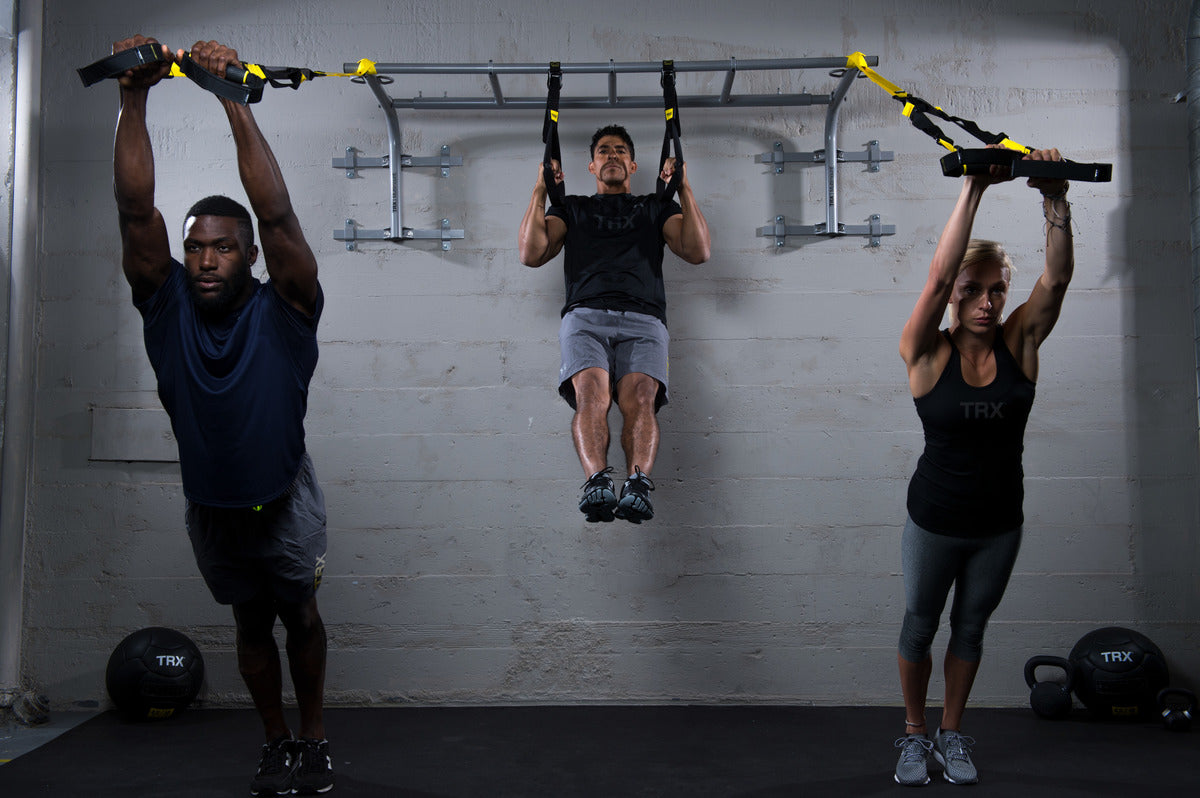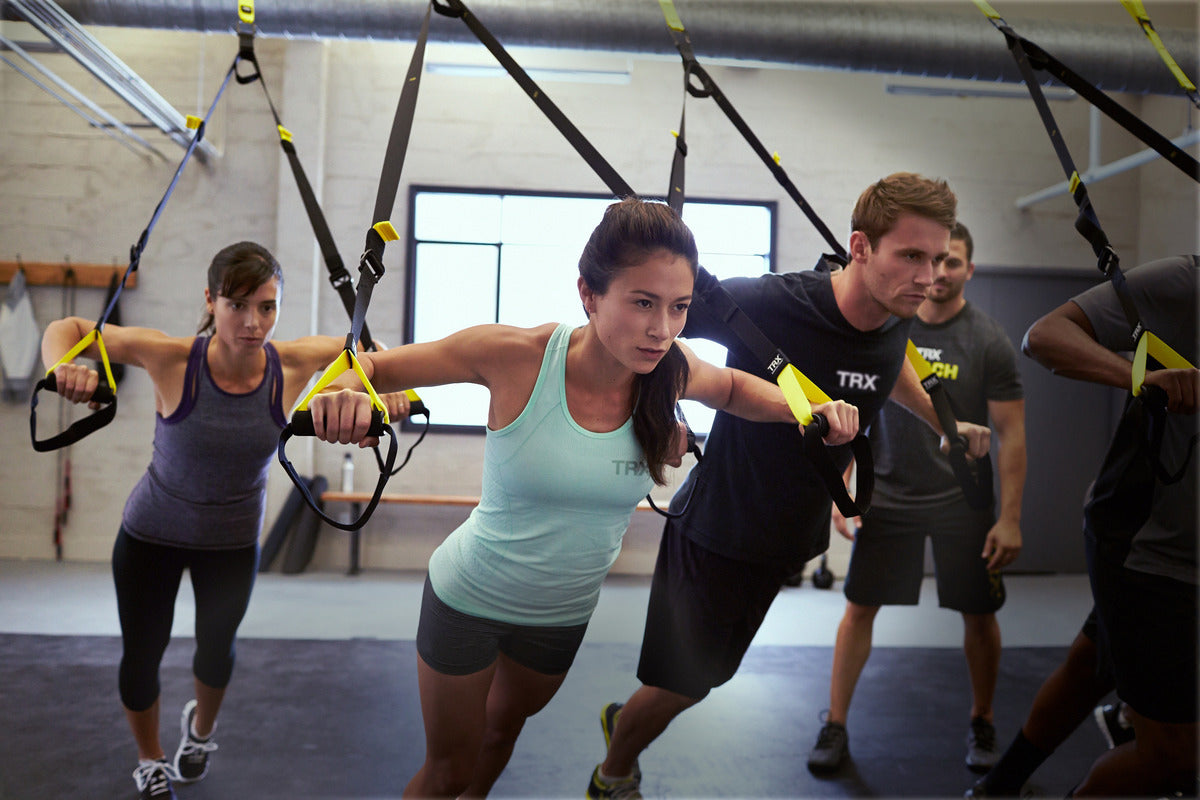Have you ever experienced the frustration of dropping a kettlebell mid-workout due to a weakened grip? Or found it challenging to maintain a firm hold on a bar while attempting a pull-up or chin-up?
If these scenarios resonate with you, rest assured that you're not alone. Grip strength plays a vital role in various everyday activities, such as opening jars, maneuvering door handles, or pushing a stroller or shopping cart. It becomes even more crucial when engaging in athletic or physical pursuits, like golf or tennis swings, pull-ups, rock climbing, or weightlifting. Surprisingly, many individuals overlook the significance of grip strength and fail to prioritize its improvement through dedicated training.
If you aspire to improve pull-ups or chin-ups by strengthening your grip, it is imperative to focus on strengthening your grip. Begin your journey by implementing the following tips and techniques. They will help you develop a solid foundation for improved grip strength and unlock new possibilities in your fitness endeavors.
4 Tips to Strengthen Your Grip for Pull-Ups
Whether you’re trying to strengthen your grip for pull-ups or to become a more well-rounded athlete, give these tips a try:
Tip 1: Use Hand Grips
If grip strength training is new to your routine, then starting with a basic hand gripper will be an excellent workout for the various muscles in your hands. Hand grippers are a great way to work on your crush grip, where your hand is closing around something, like a pull-up bar.
Hand grippers offer various tensions, so be sure to find one that suits your needs. Ideally, you’ll want to find a hand gripper that allows you to adjust the resistance. If you can’t get the gripper to move, your tension is probably too high. And if you’re closing it with ease, you’ll want one that offers more tension.
Adjustments: You can practice and improve your crush grip for each finger by squeezing with just your thumb and your index finger, or thumb and middle finger, etc.
Tip 2: Try Resistance Bands (AKA: Rubber Bands)
No need to buy specialty resistance bands — rubber bands are resistance bands, and they’re perfect for the muscles in your hands. You can use standard office supply rubber bands, but you’ll get the best resistance from thicker bands, like the ones used for veggies at the grocery store.
Bring the tips of your fingers together and place a thick band around them, then open and close your fingers against the band’s tension. If the movement is too easy, you can add more resistance by adding one band at a time until you find a good challenge. As with all strength training exercises, be sure to add resistance slowly to avoid pain or strain on your hand muscles.
Adjustments: You can work individual fingers by wrapping a rubber band around your thumb and index finger and opening your fingers against the band’s tension. You can also work your finger muscles for lateral movement by placing the band around any two fingers and spreading the fingers while keeping your hand flat.
Tip 3: Do Fingertip Push-Ups
Fingertip push-ups are the exercise of choice of martial arts experts for developing powerful grip strength. Working your way up to a fingertip push-up will require conditioning the muscles in your forearms since these muscles control your fingers.
Proper form is vital when performing fingertip push-ups since you’ll be supporting your body weight on just your fingers and toes. Be sure to spread your fingertips as wide as possible to avoid putting too much weight on any individual finger. It’s essential to bend your fingers to prevent hyperextending your joints.
Adjustments: Putting your hands in buckets of sand is a great way to support your fingers as you’re starting out. As you develop better grip and finger strength, you can slowly remove sand and eventually remove the bucket.
Tip 4: Hang From a Pull-Up Bar (AKA: Dead Hangs)
Don’t underestimate the benefits of simply hanging from a push-up bar at the end of your workout. Hang from the bar for one minute using a parallel grip (where the fingers of both hands face each other). Rest, and then repeat the dead hang for another minute.
Performing dead hangs at the end of each workout offers many benefits beyond increasing your pull-up grip strength, including stretching the muscles in your arms and back and decompressing your spine.
Adjustments: If you want to add difficulty to this movement, try weighted dead hangs with a weighted vest or one-armed dead hangs.
3 Exercises to Add Variety to Your Pull-Ups
The most common pull-up uses an overhand (pronated) grip, where your palms are facing away from you while gripping the bar. The overhand grip is also used when performing deadlifts, bench presses, and barbell rows, which is why strength training is an excellent way to train for pull-ups.
In your pursuit of enhancing grip strength, it is crucial to explore the realm of pull-ups and incorporate variety into your training routine. Similar to other forms of strength and resistance training, there exist multiple approaches to executing a particular movement.
The conventional pull-up employs an overhand grip, known as the pronated grip, wherein your palms face away from your body as you grasp the bar. This grip style is also utilized in exercises such as deadlifts, bench presses, and barbell rows, making strength training an effective means to prepare for pull-ups.
1. Chin-Ups
Chin-ups are pretty similar to pull-ups. The main difference is that you use an underhand grip for chin-ups, where your palms are facing toward you when gripping the bar. Chin-ups are considered the easier of the two exercises since your arms are in a more neutral position, so starting with chin-ups may be ideal if you’re new to training for pull-ups.
How To Do Chin-Ups:
- Grab the pull-up bar with both hands. Your palms should be facing you with your arms shoulder-width apart. This is your starting position.
- Exhale, engage your core and latissimus dorsi (AKA: your lats) and pinch your shoulder blades back toward your spine to pull yourself up. Your elbows should be fully bent when your chin is above the bar.
- Pause here at the top of the movement.
- With a controlled motion, slowly lower yourself back to the starting position. This is one rep.
- Repeat for 8 to 12 reps.
Pro Tip: Keep your hips aligned with your torso so your shoulder blades can retract (moving back and down toward your spine).
2. Towel Pull-Ups
Using a towel for your pulling work is an excellent way to build upper-body strength and improve your grip strength. The towel pull-up activates the muscles in your forearms better than a standard pull-up, which will increase your grip strength. Additionally, towel pull-ups offer a more significant range of motion than standard pull-ups.
How To Do Towel Pull-Ups:
- Place the towels over your pull-up bar about shoulder-width apart. Grab both ends of ends of each towel with each hand. Keep your elbows slightly bent. Your legs should be extended, with your ankles crossed.
- Squeeze your glutes and quads and engage your lats. Rotate your shoulder blades upward and away from your spine. Keep your chin tucked throughout the movement. This is your starting position.
- Exhale, engage your core and initiate the upward movement by retracting your shoulder blades and pulling your elbows toward your body. Continue retracting your shoulder blades and squeeze your upper back muscles until your chest reaches the same height as your hands.
- Pause here at the top of the movement.
- Control your downward movement by straightening your arms and allowing your shoulder blades to protract (upwardly rotate away from your spine) until you’re back to the starting position. This is one rep.
- Repeat for 8 to 12 reps.
Pro Tip: Longer towels leave room for more movement. Use shorter towels when you’re starting out, but feel free to switch to longer towels when you’re ready to add more difficulty to the movement.
3. Negative Pull-Ups
Negative pull-ups are the downward half of a standard pull-up. They’re incredibly beneficial for upper-body strength and endurance because they challenge your muscles much more than regular pull-ups do. More importantly, negative pull-ups significantly increase your grip strength for pull-ups. Gripping the bar for a prolonged time activates the muscles in your hands, wrists, and forearms.
How To Do Negative Pull-Ups:
- Since you’re only performing the downward half of a pull-up, you want to start with your chin above the bar. Stand on a chair or plyo box to get to the top of the movement for a standard pull-up.
- Squeeze your glutes and quads while engaging your core. Rotate your shoulder blades upward and away from your spine. Keep your chin tucked throughout the movement.
- Engage your lats, retract your shoulder blades, and step off your chair or other support. This is your starting position for a negative pull-up.
- Exhale and slowly lower yourself down from the pull-up bar by straightening your arms and rotating your shoulder blades away from your spine. Engage your grip and keep the tension in your lats to control the downward movement and maximize your resistance against gravity.
- Lower yourself down until you’re in a dead hang with a slight bend in your arms. This is one rep.
- Repeat for 6 to 8 reps.
Pro Tip: When you're starting out, aim for one rep to take about 3 to 5 seconds to lower yourself down. You can increase the time as the movement becomes more comfortable. Another option for increasing the difficulty is to pause and hold your movement when you're halfway down or at more intervals.
4 Benefits of Increasing Your Grip Strength for Pull-ups
Increasing your grip strength can have enormous payoffs for your overall strength and physique. Here are just a few benefits you can look forward to:
1. Reduce Your Risk of Injury
Strengthening your grip for pull-ups means you're less likely to lose your grip on a pull-up bar or drop a free weight during strength training. A firmer pull-up grip leads to stronger forearm muscles, which are less likely to be injured. A stronger grip also lowers your chances of developing elbow pain or forearm muscle injuries.
2. Improve Your Athletic Performance
A stronger pull-up grip can improve your overall athletic performance, from more vigorous workouts to specific sports. Better grip strength can help you take on heavier weights — like the new YBell Pro Series — and more reps with more confidence for your strength training. If you enjoy group training events like Crossfit, improved grip strength can help your performance when doing high reps of exercises with dumbbells and kettlebells. And if you prefer high-intensity resistance training, improved grip strength will help you increase your reps with your YBells.
Grip strength goes beyond strength training, though. Rock climbers need a strong hand grip, finger strength, and pulling power to reach new heights. To swing a hockey stick, tennis racket, or baseball bat, you need grip strength. But don't forget about the grip strength required to pitch a softball, hold a basketball, or throw a football.
3. Perform More Powerful Deadlifts
A weak grip will limit the number of reps and weights you can lift, whereas a firmer pull-up grip gives you more control over your muscles and your breathing during deadlifts. Whether you're using a double overhand grip, a mixed grip, or a hook grip, you want to feel in control of your hand's grip and your muscles from your fingers to your forearms all the way to your posterior chain.
4. Execute Better Pull-Ups
It's a no-brainer: When you strengthen your grip for pull-ups, your pull-up performance improves, from better form to more reps. Most people who struggle to perform a pull-up often struggle due to a weak grip, limiting their ability to hold the bar properly, even if they've developed upper body strength. With a better and proper pull-up grip, your lats and biceps can do the majority of the work, taking pressure off your forearms and hands so you can get in more reps.
By adding these grip strength techniques and exercises into your regular training routine, you'll see improvements to your pull-up grip strength over time. Not only that, you'll see a better overall physical and athletic performance.



